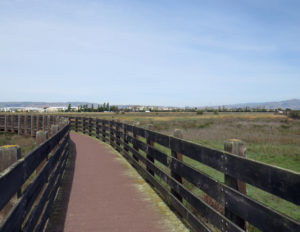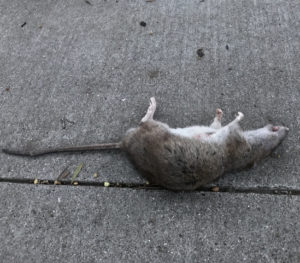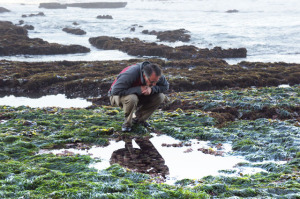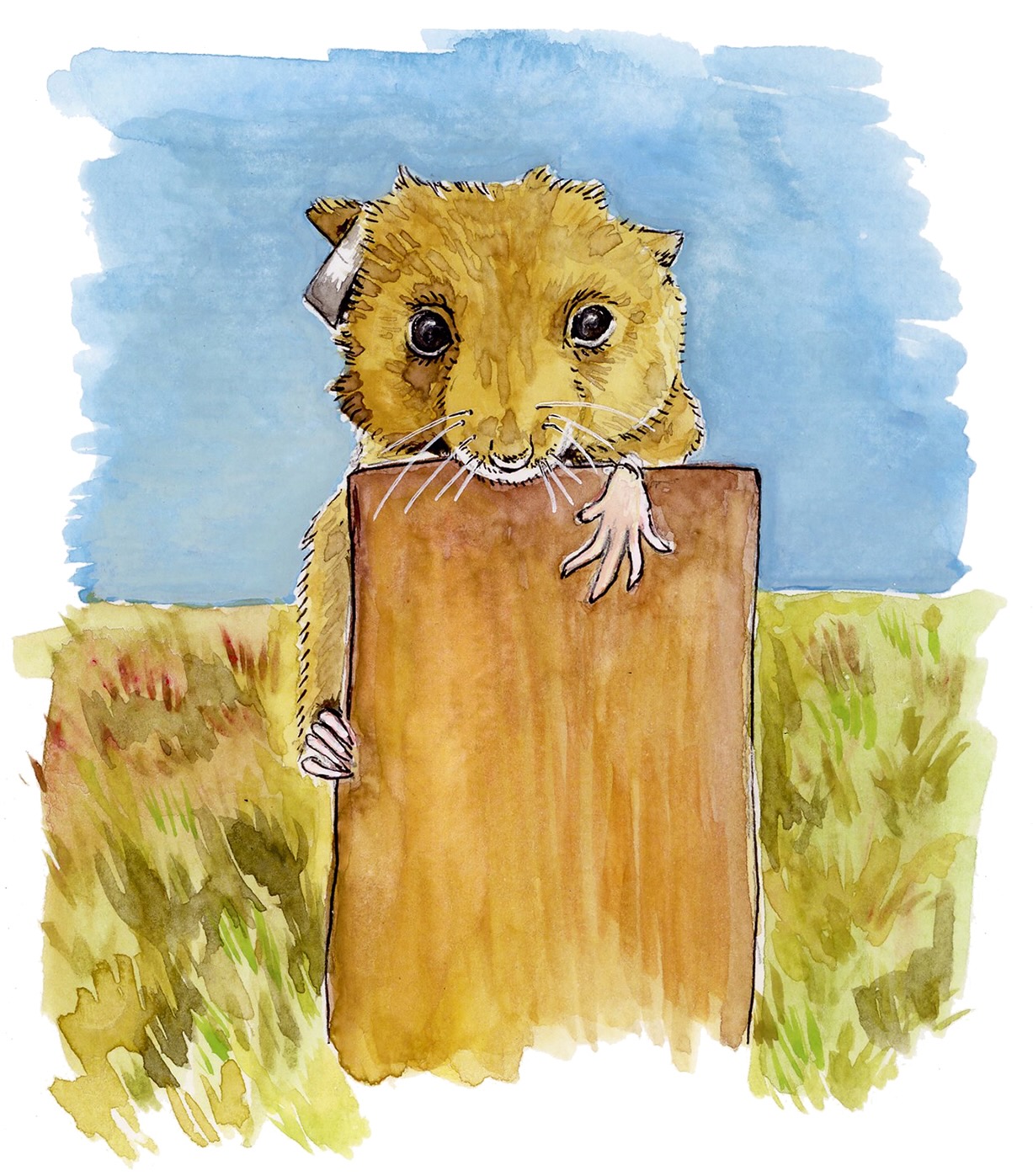
Illustrations by Lia Keener.
It was late August, and a briny breeze tugged at my hair and notebook. I stepped out onto an expanse of pickleweed at San Pablo Bay’s American Canyon. This was the salt marsh, the buffer between land and sea.
The salt-tolerant pickleweed, a succulent, was like a cross between coral and a leftover Christmas tree that formed a thick, springy, porous carpet under my boots. Black-necked stilts called over the wind. Raccoon prints dotted the mud. Rats, deer mice, house mice, mink, river otters, beavers, black rails, and Ridgway’s rails lived here, too. We were there for the salt marsh harvest mice. But the mice had hidden themselves well.

That morning, some 60 biologists and volunteers were sloshing their way across a handful of sites around the San Francisco Bay Area, all hoping to find these mice in the live traps they’d set.
The salt marsh harvest mouse’s enthusiasts, including those who study it, call it the “salty.” This gentle rodent, roughly the weight of a AAA battery, spends most of its life tucked into tangles of bayside vegetation, hidden from the people walking and living just a few hundred feet away. It is a saltscape survivalist extraordinaire, living only in Bay Area wetlands—a liminal zone, bumping against the ocean tides on one side and human developments on the other.

Mark Statham, a UC Davis researcher and salt marsh harvest mouse geneticist, says having this endemic species “should be a huge source of pride” for Bay Area residents. This is no ordinary mouse. “This is our species,” he says, and it’s “something that we need to take care of.” He says he feels “morally obliged” to help—because we humans are likely the cause of its problems.
Both the northern and southern subspecies of salt marsh harvest mouse are endangered. According to the U.S. Fish and Wildlife Service’s recovery plan for northern and central California tidal marshes, the southern subspecies has been left with less than 10 percent of its historic habitat, “and nearly all is deficient in its structural suitability.” The northern subspecies has also endured “extensive habitat loss and degradation.” The outlook is concerning: Bay sea levels are expected to rise by nearly three feet by the year 2100, which will swallow up even more of the mice’s habitat. Salties were federally listed as an endangered species in 1970, just a few years after the bald eagle.
Unlike the eagle, they remain on the list, over 50 years later.
Salties are hard to find, even when you seek them out as intensively as these surveyors are doing. But the mice are worth paying attention to because their fates may offer a glimpse of our own coastal society’s future—one that will also be fundamentally disrupted by the ebb and flow of rising sea levels and ever-more-erratic weather patterns.
As important as it is, the salty’s prolonged stay on the endangered species list is a testament to how slow the pace of conservation can be. Funding is a big challenge. That its conservation moves along at all is in large part thanks to the work of dedicated people who pour in an enormous amount of effort, many as volunteers. But until last summer, no one had ever surveyed the mice across their whole range. After 50 years, researchers hoped this survey would finally get them some answers—a baseline to assess the entire species.
Laureen Thompson, a California Department of Fish and Wildlife environmental scientist, sometimes jokes that she’s a “glorified mouse trapper,” but for her the survey was the result of years of planning and decades of involvement with salties. Out at the American Canyon site, along the Napa River, it was only a quarter to eight, but Thompson was already well into her morning of trap-checking. She parked her pickup by the sidewalk and took a few moments to organize the crew, asking a few people to scout out the traps and others to handle captured mice.
The early morning was calm and gray. Everyone seemed happy. They worked with the mice with quiet assurance and practiced hands. Each site, a little under one acre, was surveyed for three days in a row. To cover all 58 sites, the surveyors had been showing up early to check traps and returning late at night to reset them four times a week, for seven weeks straight. This was the last day.
Thompson didn’t set out to become a salt marsh harvest mouse specialist when she started at CDFW in 1993. She began surveying the salties’ populations to monitor the environmental impacts of public water projects, and “it was just one step after another,” she says. “I kept trying to answer this question, then here’s another question, answer that question.” Now she’s one of the main experts. This rangewide survey, with sites across San Pablo, Suisun, and San Francisco bays, was “the last idea I had on my bucket list,” Thompson says, and Covid delayed it by two years. Soon, a new generation of salty specialists will have to take over.
One such person is Katie Smith, a consulting biologist with WRA Inc. Smith co-led the survey with Thompson and helped bring together people, equipment, and funding for the project. “I love every single animal that comes out of a trap,” says Smith. “I’m a little fuzzies stan, you know?” She grew up keeping rats as pets, and her Twitter handle is @iheartrats.
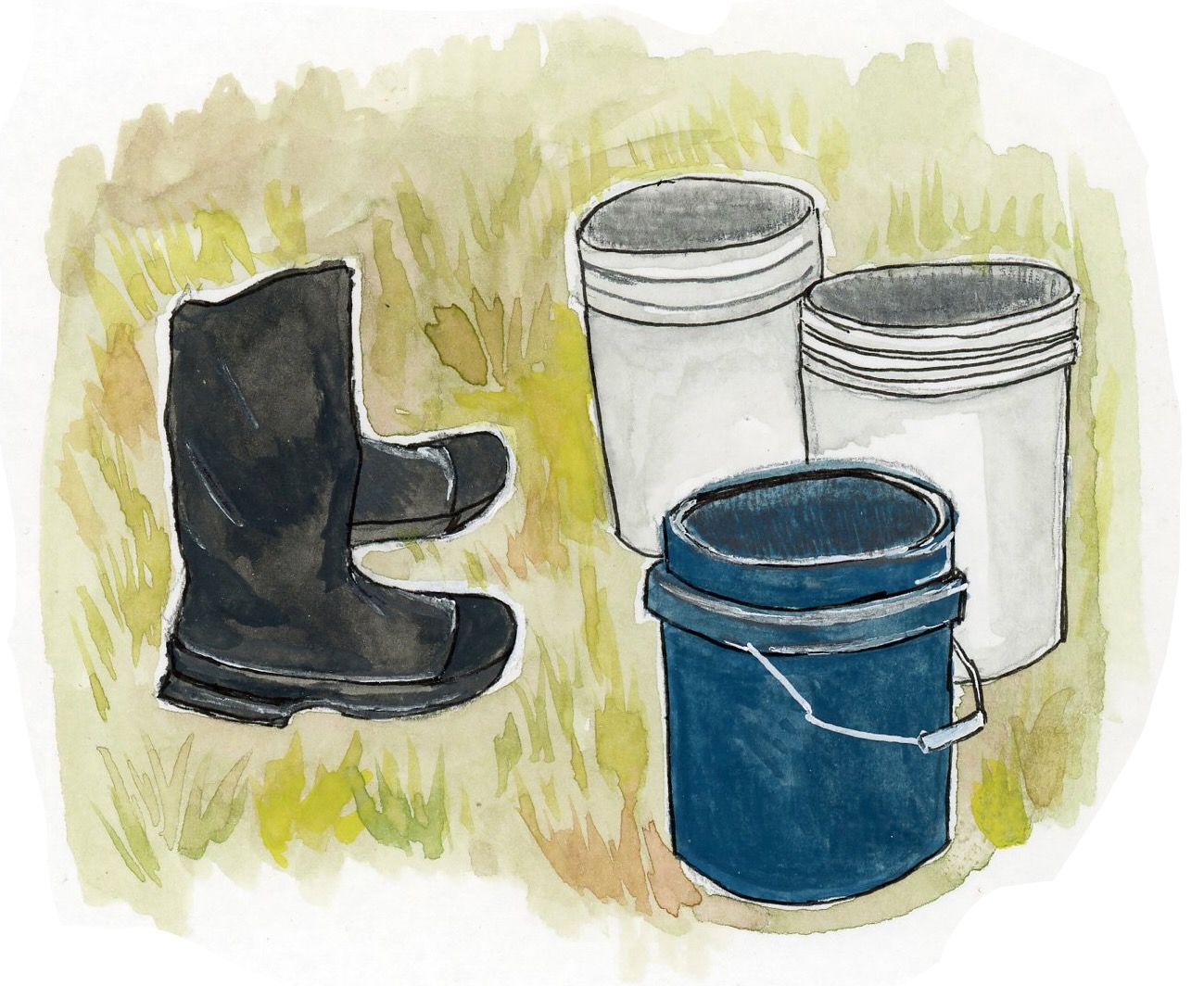
At the marsh, we gathered iPads and clipboards, scales, and sample vials and walked single file through the pickleweed and alkali bulrush, our boots squelching in the mud. We followed a map on an iPad showing the location of the traps that had been set the night before, rather like a treasure hunt through the mud—our treasure being the mice.
Every 30 feet or so, Thompson bent down to retrieve a small, silver Sherman live trap tucked among the reeds and mud. “Bed-and-breakfasts” for the rodents living in the marsh, Thompson called them. Inside each were cotton batting for warmth, birdseed and ground walnuts as mouse feed, and—when we were lucky—a rodent.
Thompson tilted a trap’s temporary resident into a bucket. It jumped repeatedly off the bucket’s walls. This was no salty, but a house mouse, which is very far from endangered. Other traps caught western harvest mice—also not endangered. Western harvest mice in particular, though, are notoriously difficult to tell apart from salties by eye. In fact, in earlier decades, field biologists in some areas distinguished between the western and salt marsh harvest mouse with just around 50 percent accuracy. In recent years, folks like Thompson and Smith have improved their odds by standardizing the approaches to identification and using a surefire genetic test.
Our next trap revealed one very calm mouse: plump, shaped like a tiny, rounded Twinkie, with huge, dark eyes, and covered in short, tawny, coffee-colored fur. This was a salty.
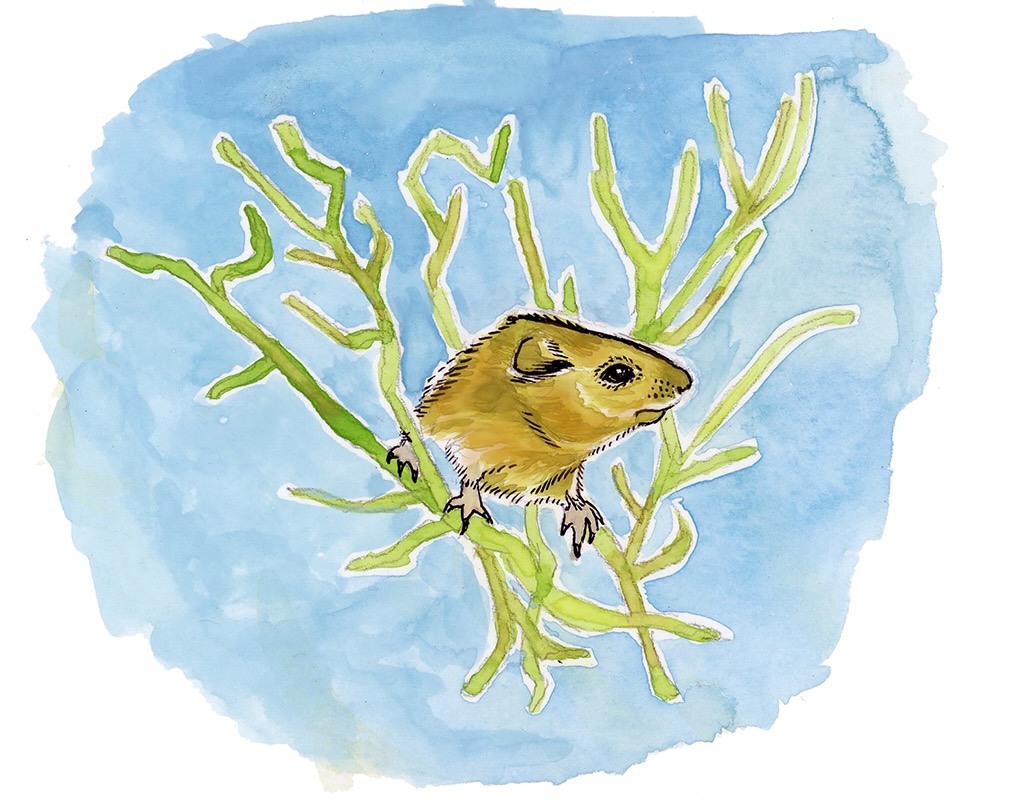
It didn’t blink as Thompson held it and gently maneuvered its limbs for measurement. She weighed it (12 grams), sexed it (male), cut off a bit of fur, took a small skin sample for Statham’s genetic work, and gave it a tiny, jaunty silver ear tag. Then she snapped a couple of pictures and set it down on the pickleweed. The mouse moseyed away, melting silently into the labyrinth of pickleweed tunnels. Why, I wondered, do salties live only in these marshes that are so susceptible to the onslaught of the tides? Why don’t they just move upland when the water encroaches?
Smith believes it could have to do both with the mice’s dispositions and their salt tolerance—they can even drink salt water if needed. The salties, it seems, are the pushovers of the mouse world. More aggressive (and less salt-specialized) species such as western harvest mice and house mice tend to colonize and defend the less salty upland areas, preventing the salties from establishing in areas that are safer from the lapping waves.
The survey was “a hard slog,” says Statham. But it paid off. In total, around 800 mice were trapped. Around half of them were salties, which were found at all but seven of the 58 sites. Preliminary results showed that around half of the surveyed sites met Fish and Wildlife’s threshold for healthy salty populations. Around a third were below a lower threshold, pointing to opportunities for potential future management and conservation action.
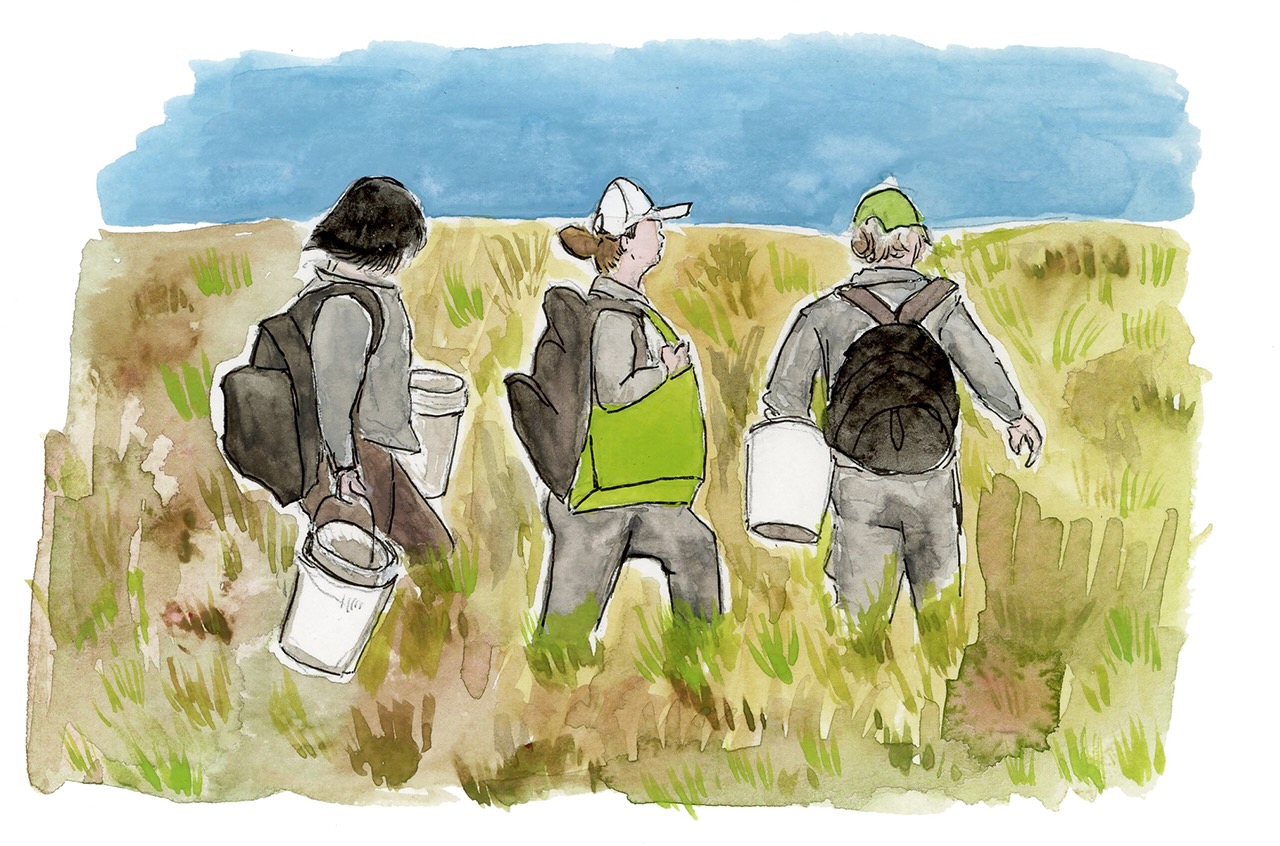
The team is currently analyzing the data, which will provide the first rangewide look at salty populations in the Bay, their genetic diversity, and which areas are “good value” for this species, according to Smith. “I am really hoping we can get buy-in from the state and federal agencies to look at this data and really use it to prioritize tidal restoration, surveys, and projects,” Thompson says.
Usefully, last summer’s survey happened before this winter’s bout of storms, which hammered the marshlands and pummeled the pickleweed with torrents of water. “All you need to have is one really big tide coupled with one big storm like this, and you can lose an entire marsh population of mice,” says Smith.
“I live near a marsh,” Smith noted when we spoke over the winter during one of those storms. She did her master’s and Ph.D. work on the mouse and has a tattoo of it on her back. “Knowing that today a lot of salties died—it’s really hard. It hurts me.” This species has already been through a lot.
For decades, the salties’ marshes—like so many of our nation’s wetlands—have been at the nexus of many overlapping human claims and conservation initiatives. Amid it all is a tiny mouse, just trying to survive.
For example, during the 20th century, duck clubs helped preserve Suisun Bay’s wetlands. They protected dabbling duck habitat—often shared by salties—from development. Though duck clubs have dwindled, wetland restoration has become more popular. Development is no longer the issue. Now, “sea-level rise is 100 percent the biggest future threat,” Smith says. Although salties are fantastic swimmers compared to their western harvest mouse kin (Thompson suggests imagining a golden retriever versus a pit bull swimming), they require tall vegetation to clamber up and shelter in when tides wash in and out of the marsh twice a day. If tidal flow or storm runoff is too great and vegetation too scant, these mice risk getting washed away.
In diked wetlands, where tidal flow is allowed in but restricted, the salties are not subjected to such a great tidal range, and they often fare better. But tidal restoration in Suisun Bay is often geared toward the delta smelt—a fellow endangered species. Well-meaning projects to protect one species can have unintended consequences for another: smelt-oriented restoration often involves breaching levees and unleashing the tides, which can submerge harvest mouse habitat. Thompson likens the complete removal of levees for tidal restoration to a catastrophic levee failure in 2008. “At Wheeler Island, they completely lost the mouse habitat,” she says. “It’s gone, and it’s probably never going to come back.”
Theoretically, after an initial levee breach, sediment would settle and vegetation would regrow into a natural buffer between water and land, eventually restoring habitat for the salties. “The problem is the interim between that initial levee breach and when the vegetation gets there could be 100 years, and this is an animal that lives just over a year,” Thompson says. “So what are they supposed to do in that interim?”
So sometimes, conservation priorities clash. But compromises may be possible—for example, restoring areas like salt ponds that are not yet marsh habitat. “Muted” tidal restoration is another option, which restores wetlands but leaves water control structures in place and doesn’t completely flood mouse habitat. It’s an idea that Thompson says is gradually gaining traction, “but it’s amazing how long things take.”
So here’s this 12-gram, land-bound rodent, facing off against a rising tide. Unlike its fellow wetland specialists, the Ridgway’s rails, the salt marsh harvest mouse can’t fly away from incoming waves, or move to a more suitable marsh. Without refuge, it perishes. The mouse’s sensitivity makes it, Smith says, “the best indicator of how safe the marshes are from sea-level rise, or how safe the wildlife there is from the effects of climate change.” And while these belts of salt marsh bordering the Bay are easily ignored, they are what protects our own habitat from an inevitably rising tide.


